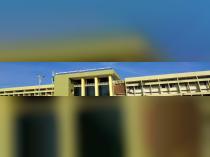How much rank should I score to get a seat in NIT Surathkal?
-
3 Answers
-
If you belong to the General AI quota, you should aim to target a cutoff rank up to 25160 to be eligible to secure a seat at NIT Surathkal for BTech admission across multiple specialisations. For 2025 admission, the Round 1 JEE Main ranks varied between 1528 and 25160. However, please note that the cutoff ranks vary for different rounds, specialisations, and categories. Candidates can refer to the table below to view the JEE Main Round 1 cutoff ranks of all the BTech specialisations offered at NIT Surathkal for the General AI quota:
Course JEE Main Round 1 Cutoff 2025 B.Tech. in Computer Science and Engineering 1528 B.Tech. in Artificial Intelligence 2372 B.Tech. in Information Technology 2787 B.Tech. in Computational and Data Science 3192 B.Tech. in Electronics and Communication Engineering 3934 B.Tech. in Electrical and Electronics Engineering 5728 B.Tech. in Mechanical Engineering 10057 B.Tech. in Chemical Engineering 12286 B.Tech. in Civil Engineering 19255 B.Tech. in Metallurgical and Materials Engineering 20021 B.Tech. in Mining Engineering 25160 -
NIT Surathkal offers admission to BTech courses through JEE Main followed by JoSAA and CSAB Counselling. Candidates who qualify JEE Main 2023 are called for the JoSAA Counselling 2023. JoSAA Counselling was held for up to six rounds followed by CSAB for two special rounds for NITs. Candidates can refer to the table given below to check out Round 1 NIT Surathkal cutoff 2023 for General category students
Course R1 (Closing Rank) B.Tech. in Mechanical Engineering 11214 B.Tech. in Civil Engineering 20639 B.Tech. in Mining Engineering 25412 B.Tech. in Chemical Engineering 14070 B.Tech. in Electronics and Communication Engineering 4554 B.Tech. in Electrical and Electronics Engineering 6713 B.Tech. in Computer Science and Engineering 1594 B.Tech. in Information Technology 2652 B.Tech. in Metallurgical and Materials Engineering 22140 Discontinued (Jul 2023)- B.Tech. in Artificial Intelligence 2588 B.Tech.1 in Computational and Data Science 3329 -
NIT Surathkal offers admission to BTech courses through JEE Main followed by JoSAA and CSAB Counselling. Candidates who qualify JEE Main 2024 are called for the JoSAA Counselling 2024. JoSAA Counselling was held for up to six rounds followed by CSAB for two special rounds for NITs. NIT Surathkal JEE Main cutoff 2024 has been released for Round 1 among various specialisations wherein, CSE turned out as the most competitive BTech course with a closing rank of 1423 for the General AI category students.
Candidates can refer to the table given below to check out Round 1 NIT Surathkal cutoff 2024 for General category students to g
...more
Similar Questions for you
Candidates have to authenticate themselves during JAC Chandigarh registration using JEE Main application number, Name as per JEE Main admit card, and Date of birth as per JEE Main application.
During AIT Pune admission, candidates will have to fill JEE Main scores and admit card details. These details have to be submitted correctly, otherwise their admission will be cancelled.
If two or more candidates have same JEE Main score for AIT Pune admission, then authorities will follow tie breaking guidelines. This will be done to select an eligible candidate for the higher rank.
For AIT Pune admission, authorities will not accept any other entrance exam scores expect JEE Main. Candidates have to qualify JEE Main to be eligible for admissions into AIT Pune.
After the JEE Main result is out, candidates can:
- Register for JoSAA counselling for admission to NITs, IIITs and GFTIs.
- Register for state-level counselling like UPTAC, Bihar UGEAC, JAC Delhi, etc.
- If qualified for JEE Advanced, register for JEE Advanced exam at jeeadv.ac.in
Taking an Exam? Selecting a College?
Get authentic answers from experts, students and alumni that you won't find anywhere else
Sign Up on ShikshaOn Shiksha, get access to
- 66k Colleges
- 1.2k Exams
- 680k Reviews
- 1800k Answers


